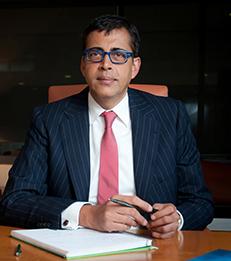Opinion
How Global Is Your C-Suite?
—


...the data suggest that most international interactions are, in fact, semiglobalized, and closer to the “zero-integration” extreme than to the “complete-integration” extreme — usually by a wide margin.
By Pankaj Ghemawat
Despite globalization, the vast majority of the world’s largest corporations are run by CEOs native to the country in which the company is headquartered. But more executive diversity at the top is sorely needed — and will require sweeping changes in how companies are organized.
The globalization of companies can be — and frequently has been — looked at in different ways: in terms of the internationalization of sales or assets, cross-border supply chains or shared services, organizational structures, functional policies (marketing standardization versus customization) and so on. In this article, we look at much less studied individual measures of globalization: the extent to which the managers who head the world’s largest corporations — at the CEO level and at the level of the managers listed as reporting directly to him or her (henceforth, the top management team) — are native or not to the country where the corporation is headquartered.
The Positive Consequences of National Diversity
Are the national origins of those who run the world’s largest corporations even worth considering? Despite all the research on “upper echelons theory,” at least some people think not. Some rely on author Thomas Friedman’s memorable characterization of the world as “flat” to aver that everybody, everywhere, is subject to the same forces of globalization, irrespective of nationality. However, the data suggest that most international interactions are, in fact, semiglobalized, and closer to the “zero-integration” extreme than to the “complete-integration” extreme — usually by a wide margin. And in terms of changes, a globalization index that one of us (Ghemawat) compiles annually indicates that current levels of globalization are still below those reached before the global financial crisis.
Read the full article as published in the MIT Sloan Management Review.
___
Pankaj Ghemawat is a Global Professor of Management and Strategy and Director of the Center for the Globalization of Education and Management.
The globalization of companies can be — and frequently has been — looked at in different ways: in terms of the internationalization of sales or assets, cross-border supply chains or shared services, organizational structures, functional policies (marketing standardization versus customization) and so on. In this article, we look at much less studied individual measures of globalization: the extent to which the managers who head the world’s largest corporations — at the CEO level and at the level of the managers listed as reporting directly to him or her (henceforth, the top management team) — are native or not to the country where the corporation is headquartered.
The Positive Consequences of National Diversity
Are the national origins of those who run the world’s largest corporations even worth considering? Despite all the research on “upper echelons theory,” at least some people think not. Some rely on author Thomas Friedman’s memorable characterization of the world as “flat” to aver that everybody, everywhere, is subject to the same forces of globalization, irrespective of nationality. However, the data suggest that most international interactions are, in fact, semiglobalized, and closer to the “zero-integration” extreme than to the “complete-integration” extreme — usually by a wide margin. And in terms of changes, a globalization index that one of us (Ghemawat) compiles annually indicates that current levels of globalization are still below those reached before the global financial crisis.
Read the full article as published in the MIT Sloan Management Review.
___
Pankaj Ghemawat is a Global Professor of Management and Strategy and Director of the Center for the Globalization of Education and Management.
